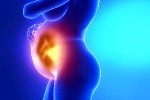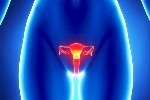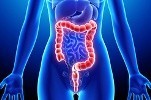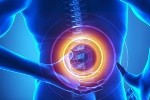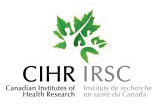Acupuncture Has Effective Outcome in Primary Headache Treatment
Acupuncture has a long tradition of use for the treatment of many pain conditions, including headache [1]. Its effectiveness has been studied mainly for primary headaches, particularly for migraine and tension-type headache (TTH) and also treat other reasons caused the headache including:
• Migraine
• Tension type headache
• Cluster headache
• Post traumatic headache
• Headache arising from the cervical spine
• Medication induced headache
• Headache related to serious medical conditions
professionals at the Advanced Acupuncture & Herbs Clinic are also experts in the dagnosis and treatment of patients with headache pain according Chinese meridian and
syndrome
Meridian Diagnosis and Syndrome Diagnosis
Traditional Chinese Medicine (TCM) has two diagnostic frameworks for headaches: meridian diagnoses, based on the location of the pain and on the meridians (or channels) that pass through it; syndrome diagnoses, dependent on external or internal factors and on the characteristics of the pain.
The four meridians involved in headache are Shaoyang (TE-GB channels, on the temporal sides of the head); Taiyang (SI-BL channels, occiput); Yangming (LI-ST channels, forehead) and Jueyin (PC-LR channels, vertex).
Syndrome diagnoses are based on the information from analyzing organ functions, internal/external factors, clinical symptoms and tongue diagnosis. Moreover, there is a differentiation in many syndromes that present several different symptoms. In general, the syndromes are divided into excess and deficit syndromes. Very generally, the excess syndromes correspond in the majority of cases to migraine and the deficit syndromes to TTH.
Treatment According to Clinic Feature
Acupuncture is a complex intervention, which is also characterized by a close interaction between patient and therapist.
The complicated system of TCM classification of headaches has frequently generated great diversity among the various therapeutic approaches used in the different studies on acupuncture in headache treatment.
Meridian diagnoses identify the involvement of meridians by examining the location of diseases according to where the disease and the pain occur. This is an essential concept for selecting the acupuncture points.
The four principal Meridians involved in headache are Shaoyang 手足少阳三焦经 (TE-GB channels, on the temporal sides of the head), Taiyang 手足太阳膀胱经 (SI-BL channels, occiput), Yangming 手足阳明胃经
(LI-ST channels, forehead) and Jueyin 手足厥阴肝经 (PC-LR channels, vertex) [8, 9]. Therefore, headache over the forehead indicates the involvement of the Yangming meridian, headache on the temporal side
of the head indicates the involvement of Shaoyang meridian, etc.
The acupoints are selected from head and neck and then from four limbs, in conformity with the principle of local acupoints and distal additional acupoints. Because three yang meridians start from the four limbs and intersect at the head and face, the acupoints are mostly selected from yang meridians in the treatment of headache. Therefore, this fact indicates that the medical practitioners in the modern times pay attention to the combination of local acupoints selected upon symptoms and distal acupoints selected along the involved meridians.
Precious Experience and Clinic Anaysis
Our profissional experts in Advanced Acupuncture & Herbs Clinic use precious experiment and analysis of liteture about acupuncture treatment of headache;
There are eight acupoints used in frequency,
Fengchi 风池 (GB 20) 足少阳胆经,
Taiyang 太阳 (Ex-HN 5) 经外奇穴
Shuaigu 率谷 (GB 8) 足少阳胆经,
Taichong 太冲 (LR 3) 足厥阴肝经,
Hegu 合谷 (LI 4) 手阳明大肠经,
Baihui 百会 (GV 20) 督脉,
Touwei 头维 (ST 8) 足阳明胃经,
Zusanli 足三里 (ST 36) 足阳明胃经.
Among them, there are 5 acupoints on the head, and 3 acupoints on the four limbs. Other acupoints used in high frequency are
Waiguan 外关 (TE 5) 手少阳三焦经,
Sanyinjiao 三阴交(SP 6) 足太阴脾经,
Yintang 印堂 (Ex-HN 3) 经外奇穴,
Fenglong 丰隆(ST 40) 足阳明胃经,
Neiguan 内关 (PC 6) 手厥阴心包经,
Taixi 太溪 (KI 3) 足少阴肾经,
Lieque 列缺 (LU 7) 手太阴肺经,
Tianzhu 天柱 (BL 10) 足太阳膀胱经,
Zulinqi 足临泣 (GB 41) 足少阳胆经,
Xingjian 行间 (LR 2) 足厥阴肝经,
Sizhukong 丝竹空 (TE 23) 手少阳三焦经,
We found that the combination of local acupoints and distal additional acupoints is highly emphasized in acupuncture treatment of headache. Some specific features exist in the selection of the acupoints: the frequency of five acupoints on the head are frequently used. They are respectively Fengchi 风池 (GB 20) 足少阳胆经, Taiyang 太阳 (Ex-HN 5) 经外奇穴, Touwei 头维 (ST 8) 足阳明胃经, Baihui 百会 (GV 20) 督脉, and Shuaigu 率谷 (GB 8) 足少阳胆经. The local acupoints are mostly selected from yang meridians 阳经.
Among them, Hegu 合谷 (LI 4) 手阳明大肠经 , Taichong 太冲 (LR 3) 足厥阴肝经, and Zusanli 足三里 (ST 36) 足阳明胃经, the distal acupoints selected from the four limbs are equally important.
For different TCM patterns of headache, predominantly the acupoints are mainly along the involved meridians in the treatment. For headache due to exogenous pathogens, Fengchi 风池 (GB 20) 足少阳胆经, Hegu 合谷 (LI 4) 手阳明大肠经 and Taiyang 太阳 (Ex-HN 5) 经外奇穴 are used fundamentally.
In the treatment of headacwhich induced by internal injuries, Taichong 太冲 (LR 3) is used for headache caused by liver yang 肝阳上抗, Zusanli 足三里 (ST 36) for headache due to deficiency of qi and blood (气血不足), and Fenglong 丰隆 (ST 40) for headache due to phlegm turbidity 痰凝阻止, Taixi 太溪 (KI 3) for headache due to kidney deficiency 肾阴亏虚, Sanyinjiao 三阴交 (SP 6) and Geshu 膈俞 (BL 17) for headache due to blood stasis 血瘀.
This is a feature that the acupoints selected along the involved meridians is combined with specific acupoints.
In summary, although clinical manifestations of headache are complicated and numerous, the regular clinical strategy can mostly
discovered and obtained by multiple analysis via the investigation of the data.
Scientific Evidence of Acupuncture Efficacy in Headache Treatment
In 2001 a first systematic Cochrane review on idiopathic headache judged acupuncture to be effective, although the proof of its efficacy was marred by methodological or reporting shortcomings in the studies [5]. Since then, several large and more controlled trials have been carried out. The increasing number of rigorous studies made possible two new Cochrane systematic reviews on acupuncture in 2009 [6, 7].
In the first review, dedicated to migraine [6], the authors included 22 trials (4,419 participants), with a post-randomization observation period of 8 weeks, to compare the clinical effects of an acupuncture intervention with a control (no prophylactic treatment or routine care only), a ‘‘sham’’ acupuncture intervention (placebo acupuncture) or another intervention in patients with migraine. The outcomes included response, migraine attacks, migraine days, headache days and analgesic use.
Six trials investigating whether adding acupuncture to basic care found that those patients who received acupuncture had fewer headaches. Fourteen trials compared true acupuncture with inadequate or fake acupuncture interventions in which needles were either inserted at incorrect points or did not penetrate the skin. In these trials, both groups had fewer headaches than before treatment, but there was no difference between the effects of the two treatments.
In the four trials in which acupuncture was compared with a proven prophylactic drug treatment, patients receiving acupuncture tended to report more improvement and fewer side effects. Collectively, the studies suggest that migraine patients benefit from acupuncture.
References
1. Gaul C, Eismann R, Schmidt T, May A, Leinisch E, Wieser T, Evers S, Henkel K, Franz G, Zierz S (2009) Use of complementary and alternative medicine in patients suffering from primary headache disorders. Cephalalgia 29:1069–1078.
2. Facco E, Liguori A, Petti F, Zanette G, Coluzzi F, De Nardin M, Mattia C (2008) Traditional acupuncture in migraine: a controlled, randomized study. Headache 48:398–407
3. Bo¨wing G, Zhou J, Endres HG, Coeytaux RR, Diener HC, Molsberger AF (2010) Differences in Chinese diagnoses for migraine and tension-type headache: an analysis of the German acupuncture trials
(GERAC) for headache. Cephalalgia 30(2):224–232.
4. Zhang Y, Wang L, Liu H, Li N, Li J, Yi J (2009) The design and protocol of acupuncture for migraine prophylaxis: a multicenter randomized controlled trial. Trials 10:25.
5. Melchart D, Linde K, Fisher P, Berman B, White A, Vickers A, Allais G (2001) Acupuncture for idiopathic headache. Cochrane Database Syst Rev (1):CD001218
6. Linde K, Allais G, Brinkhaus B, Manheimer E, Vickers A, WhiteAR (2009) Acupuncture for migraine prophylaxis. Cochrane Database Syst Rev (1):CD001218
7. Linde K, Allais G, Brinkhaus B, Manheimer E, Vickers A, White AR (2009) Acupuncture for tension-type headache. Cochrane Database Syst Rev (1):CD007587
8. Bowing G, Zhou J, Endres HG, Coeytaux RR, Diener HC, Molsberger AF (2010) Differences in Chinese diagnoses for migraine and tension-type headache: an analysis of the German acupuncture trials (GERAC) for headache. Cephalalgia 30(2):224–232.
9. Zhang Y, Wang L, Liu H, Li N, Li J, Yi J (2009) The design and protocol of acupuncture for migraine prophylaxis: a multicenter randomized controlled trial. Trials 10:25
Contact Us
Chalmers Medical Building
328 Hwy 7 East Suite 201,
Richmond Hill ON L4B 3P7
Tel: 416 399-3888
E-mail: info@aahclinic.com
Conditions Treated
Effective Herbal Therapy for Inflammatory Bowel Disease
NO Surgery!
Carolyn XU Treats Ulcer Colitis Successfully
Considering Therapy?
Resource Links
References
Donation
Great things happen when you put your heart into it.
Click Here to Send us your request
Tips
Questions about your first appointment or if your insurance will cover the cost? Find more information below.


